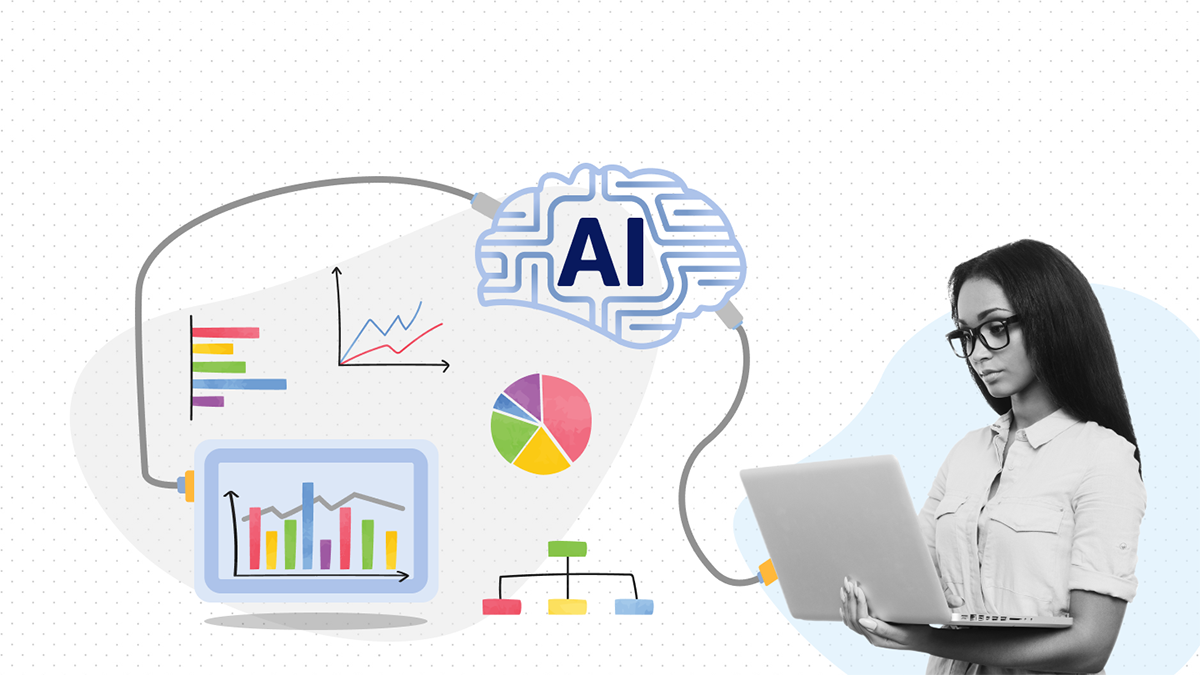In the rapidly evolving landscape of business and technology, organizations are constantly seeking ways to harness advancements to stay ahead. Generative AI, a major realm that has seen explosive growth in recent years, plays a pivotal role in data analytics. Let’s delve into its principles, models, applications, challenges, and opportunities.
What is Generative AI?
Generative AI is a type of artificial intelligence that generates new content, such as images, text, video, or music. Unlike traditional models that focus on predictions, Generative AI mimics the characteristics of the original dataset. It learns patterns and structures from large datasets, allowing users to create high-quality content using natural language prompts.
Leveraging Generative AI for Data Augmentation
Data augmentation is crucial for training robust machine learning models. Generative AI provides an elegant solution by generating synthetic data points that expand the training dataset. For instance, in image classification tasks, GANs can create variations of existing images—rotated, scaled, or with added noise. These augmented samples enhance model generalization and reduce overfitting.
Why Do We Need Data Augmentation?
- Limited Data: In many scenarios, obtaining a large labeled dataset is challenging due to resource constraints or privacy concerns.
- Imbalanced Data: Some classes may have fewer examples, leading to biased model predictions.
- Generalization: Augmented data helps models generalize better by exposing them to various variations.
Generative AI models, such as Variational Autoencoders (VAEs) and Generative Adversarial Networks (GANs), play a crucial role in data augmentation:
Key Techniques: GANs and VAEs
Two prominent techniques within Generative AI are:
- Generative Adversarial Networks (GANs): Introduced by Ian Goodfellow and colleagues, GANs involve two sub-models—a generator and a discriminator. The generator produces new data samples, while the discriminator classifies examples as real or fake. Through iterative training, GANs learn to generate plausible data that closely resembles the original dataset.
- VAEs capture the underlying structure of data by learning a latent space representation. They encode input data into a lower-dimensional space and then decode it back to generate new samples.
- VAEs are particularly useful for data augmentation, anomaly detection, and generating realistic data points.
- Applications in data analytics include predictive modeling, where VAEs can learn complex patterns and generate synthetic data for training models.
- Variational Autoencoders (VAEs): VAEs encode input data into a latent space and then decode it back to generate new instances. They find applications in data synthesis and augmentation.
- GANs consist of a generator and a discriminator that compete against each other. The generator creates synthetic data, while the discriminator tries to distinguish between real and generated samples.
- GANs excel at generating highly realistic content, such as images, by learning from real data distributions.
- In data analytics, GANs can be used for data synthesis, image-to-image translation, and style transfer.
Applications in Data Analytics
Generative AI transforms data analytics in several ways:
- Improved Data Preprocessing: Generative AI enhances data preprocessing by converting raw data into consumable forms for analysis.
- Data Generation for Model Training: It produces synthetic data that closely represents the underlying dataset, aiding model training.
- Automated Analytics Tasks: Users of all skill levels can interact with data through text-based prompts, exploring insights and supporting decision-making.
- Enhanced Data Visualization: Generative AI enables creative and informative data visualization.
Addressing Imbalanced Datasets
Imbalanced datasets—where certain classes have significantly fewer examples—pose challenges for classifiers. Generative AI can balance class distributions by creating synthetic instances of underrepresented classes. By doing so, it ensures that the model doesn’t favor majority classes, leading to more accurate predictions.
Anomaly Detection and Fraud Prevention
Generative AI aids in anomaly detection by learning the normal distribution of data. Any deviation from this learned distribution can be flagged as an anomaly. In fraud detection, GANs can identify unusual patterns in financial transactions, helping prevent fraudulent activities.
Future Directions and Research
As Generative AI continues to evolve, researchers are exploring novel architectures, interpretability, and fairness. Adversarial training, transfer learning, and fine-tuning are active areas of study. Additionally, ethical considerations around bias and transparency remain critical.
In summary, Generative AI is a powerful tool that transforms data analytics, enabling better decision-making, improved model performance, and creative data exploration. Its impact will only grow as we unlock new possibilities and address its challenges.



